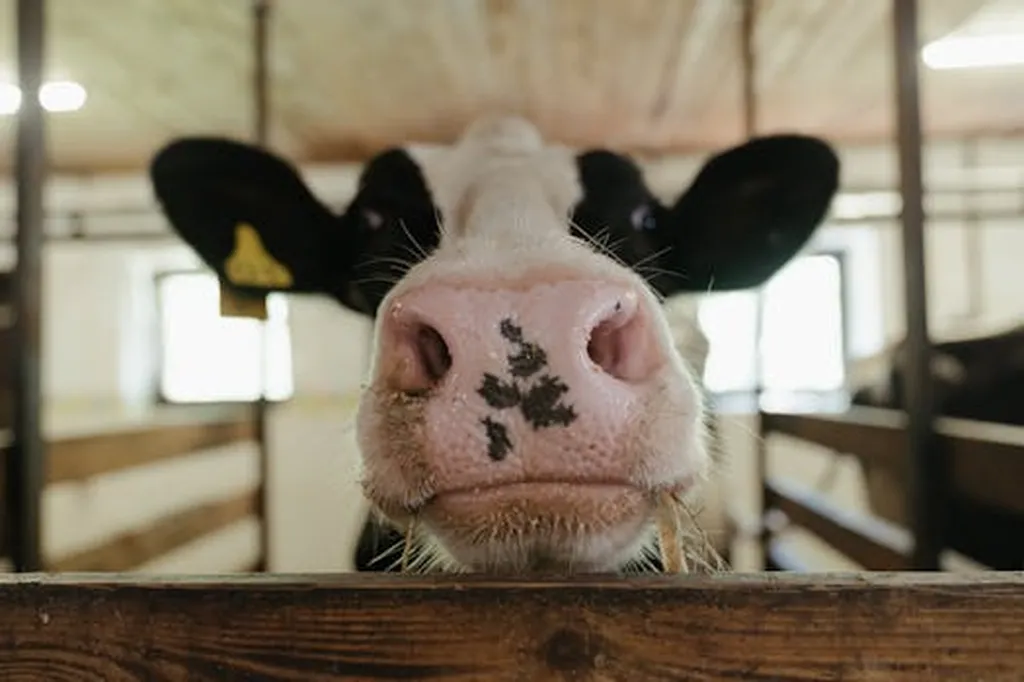In the world of dairy farming, reproductive efficiency is a critical factor that directly impacts productivity and profitability. A recent study published in *Veterinary Sciences* sheds light on how elevated levels of ammonia and urea, common byproducts of nitrogen metabolism in dairy cows, might be affecting bull sperm quality. The research, led by Amine Abdelli from the University of Bouira in Algeria, could have significant implications for the agricultural sector, particularly in breeding programs and reproductive management.
The study focused on the in vitro effects of ammonia and urea on post-thawed bull semen. Elevated levels of these compounds are increasingly found in dairy cows, but their impact on bull sperm has remained unclear until now. Abdelli and his team incubated thawed bull semen under five different conditions: a control group with no added ammonia or urea, low urea (LU), high urea (HU), low ammonia (LA), and high ammonia (HA). They then assessed various sperm characteristics, including motility, viability, DNA integrity, mitochondrial membrane potential (MMP), and oxidative stress markers.
The results were telling. High ammonia levels significantly reduced MMP and several motility parameters, such as progressive motility and velocity, compared to the low ammonia and control groups. “We observed a notable decrease in sperm viability in the high ammonia group compared to the low ammonia group at the beginning of incubation,” Abdelli noted. This suggests that ammonia, in particular, can impair sperm mitochondrial function and motility, both of which are crucial for successful fertilization.
While high urea levels also reduced MMP, they did not significantly affect sperm motility. This distinction between the effects of ammonia and urea is an important finding. “Our results highlight the specific impact of ammonia on sperm quality, which could have broader implications for reproductive management in dairy farming,” Abdelli explained.
The study did not find significant differences in DNA fragmentation or oxidative stress biomarkers between the groups, indicating that the primary effects of ammonia and urea might be on mitochondrial function and motility rather than on DNA integrity or oxidative stress.
So, what does this mean for the agricultural sector? Understanding how ammonia and urea affect bull sperm quality can help farmers and breeders optimize reproductive management strategies. For instance, monitoring and managing nitrogen levels in dairy cows could potentially improve bull sperm quality, leading to better fertilization rates and overall reproductive efficiency. This could translate into higher productivity and profitability for dairy farms.
Moreover, the findings could pave the way for further research into the molecular mechanisms underlying the effects of ammonia and urea on sperm quality. This could lead to the development of new strategies or treatments to mitigate these effects, further enhancing reproductive success in dairy cattle.
In the broader context, this research underscores the importance of understanding the intricate interplay between nutrition, metabolism, and reproductive function in livestock. As the agricultural sector continues to evolve, such insights will be invaluable in developing sustainable and efficient farming practices.
The study, titled “In Vitro Effect of Elevated Ammonia and Urea Levels on Post-Thawed Bull Semen Sperm Characteristics,” was published in *Veterinary Sciences* and was led by Amine Abdelli from the Department of Agricultural Sciences at the University of Bouira in Algeria. The research not only advances our scientific understanding but also offers practical insights that could shape future developments in the field of animal reproduction and agriculture.

